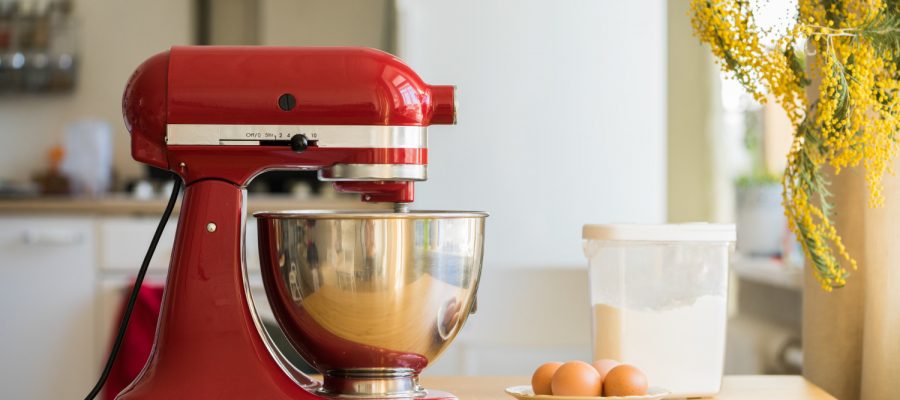Enhance Your Restaurant's Baking and Cooking Capabilities with Commercial Mixers

In the dynamic world of restaurant operations, efficiency, consistency, and quality are paramount. Whether it’s crafting delicate pastries, kneading dough for artisan bread, or whipping up savory sauces, the right equipment can make all the difference. Commercial mixers are one such essential tool that can elevate your restaurant’s baking and cooking capabilities to new heights. In this article, we’ll explore the benefits of using commercial mixers, they various types available, or how they can enhance your restaurant’s culinary endeavors.
Understanding the Importance of Commercial Mixers
Before diving into the specifics, it’s essential to understand why commercial mixers are indispensable in a restaurant kitchen:
Efficiency: Commercial mixers are designed to handle large volumes of ingredients quickly and efficiently. Whether you’re mixing batter for dozens of cakes or kneading dough for multiple loaves of bread, these machines can significantly reduce prep time and labor costs.
Consistency: Consistency is key in the restaurant industry, and commercial mixers deliver just that. With precise speed and mixing controls, you can achieve uniform results every time, ensuring that your dishes and baked goods meet the highest standards of quality.
Versatility: Commercial mixers come with a variety of attachments and accessories, allowing you to perform a wide range of tasks with a single machine. From mixing and kneading to whipping and blending, these versatile tools can handle multiple culinary applications, making them invaluable assets in any kitchen.
Durability: Unlike their residential counterparts, commercial mixers are built to withstand the rigors of a professional kitchen environment. With heavy-duty construction and robust components, these machines are designed for long-term use, offering durability and reliability you can count on.
Types of Commercial Mixers
Commercial mixers come in various types, each suited to different culinary tasks and kitchen requirements. Here are some of the most common types:
Planetary Mixers: Planetary mixers are perhaps the most versatile type of commercial mixer. They feature a stationary bowl and a rotating agitator that moves in a planetary motion, ensuring a thorough mixing of ingredients. Planetary mixers come in a range of sizes, from countertop models suitable for small bakeries to floor-standing models for high-volume operations. Learn more about them mkayn.com.
Spiral Mixers: Spiral mixers are specifically designed for kneading dough, making them ideal for bakeries and pizzerias. Unlike planetary mixers, which use a rotating agitator, spiral mixers feature a spiral-shaped dough hook that mimics the hand-kneading motion. This design ensures gentle and thorough mixing, resulting in perfectly developed dough with excellent gluten structure.
Vertical Cutter Mixers: Vertical cutter mixers, also known as food processors, are versatile machines that can perform a variety of tasks, including chopping, pureeing, and mixing. They feature a vertical bowl with a rotating blade or cutter that processes ingredients quickly and efficiently. Vertical cutter mixers are perfect for preparing sauces, salsas, dressings, and other culinary creations.
High-Speed Mixers: High-speed mixers are designed for applications that require rapid mixing and emulsification, such as whipping cream, egg whites, or mayonnaise. These machines feature powerful motors and specialized attachments that can achieve high speeds and produce smooth, aerated mixtures in a fraction of the time compared to traditional methods.
Cooking Mixers: Cooking mixers combine the functions of a mixer and a cooker in a single machine, allowing you to prepare sauces, soups, stews, and other cooked dishes in one seamless process. These versatile machines can heat, mix, and cook ingredients simultaneously, saving time and labor while ensuring consistent results.
Choosing the Right Mixer for Your Restaurant
When selecting a commercial mixer for your restaurant, consider the following factors:
Capacity: Assess your kitchen’s production needs and choose a mixer with an appropriate capacity to meet demand. Consider factors such as batch size, peak hours, and menu offerings to determine the right size for your operation.
Features: Look for mixers with features and functionalities that align with your restaurant’s specific needs. Whether it’s variable speed controls, multiple attachments, or programmable settings, choose a mixer that offers the flexibility and convenience you require.
Space: Consider the available space in your kitchen and choose a mixer that fits seamlessly into your layout. If space is limited, opt for a countertop model with a small footprint. If you have ample space, a floor-standing model may be more suitable.
Budget: Determine your budget for a commercial mixer and consider both upfront costs and long-term expenses such as maintenance, repairs, and energy consumption. While quality equipment may require a larger initial investment, it can ultimately save you money in the long run by minimizing downtime and maximizing efficiency.
Brand Reputation: Research reputable manufacturers and suppliers with a proven track record of delivering high-quality commercial mixers and reliable customer support. Read reviews, solicit recommendations from industry peers, and inquire about warranty coverage and technical assistance options.
Conclusion
In conclusion, commercial mixers are indispensable tools that can enhance your restaurant’s baking and cooking capabilities, allowing you to produce high-quality dishes and baked goods with ease and efficiency. Whether you’re mixing batter, kneading dough, or whipping up sauces, the right mixer can streamline your kitchen operations and elevate the culinary experience for your customers. Consider the various types of mixers available, choose a model that aligns with your restaurant’s needs and budget, and partner with trusted suppliers to ensure success. With the right equipment and a passion for culinary excellence, you can take your restaurant’s offerings to new heights of creativity and innovation.





